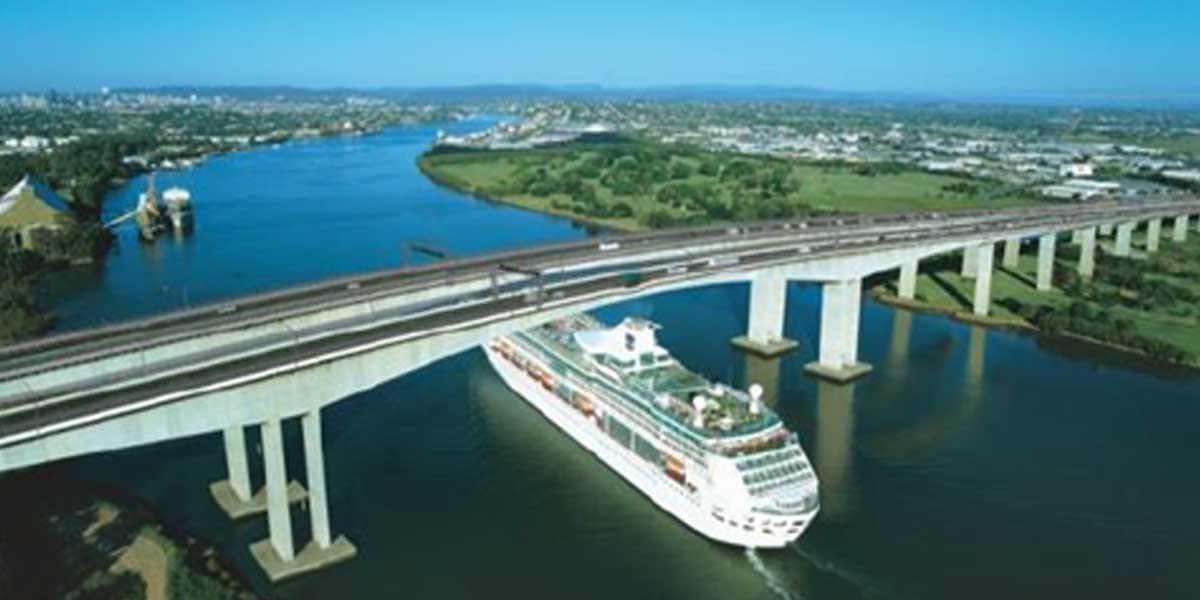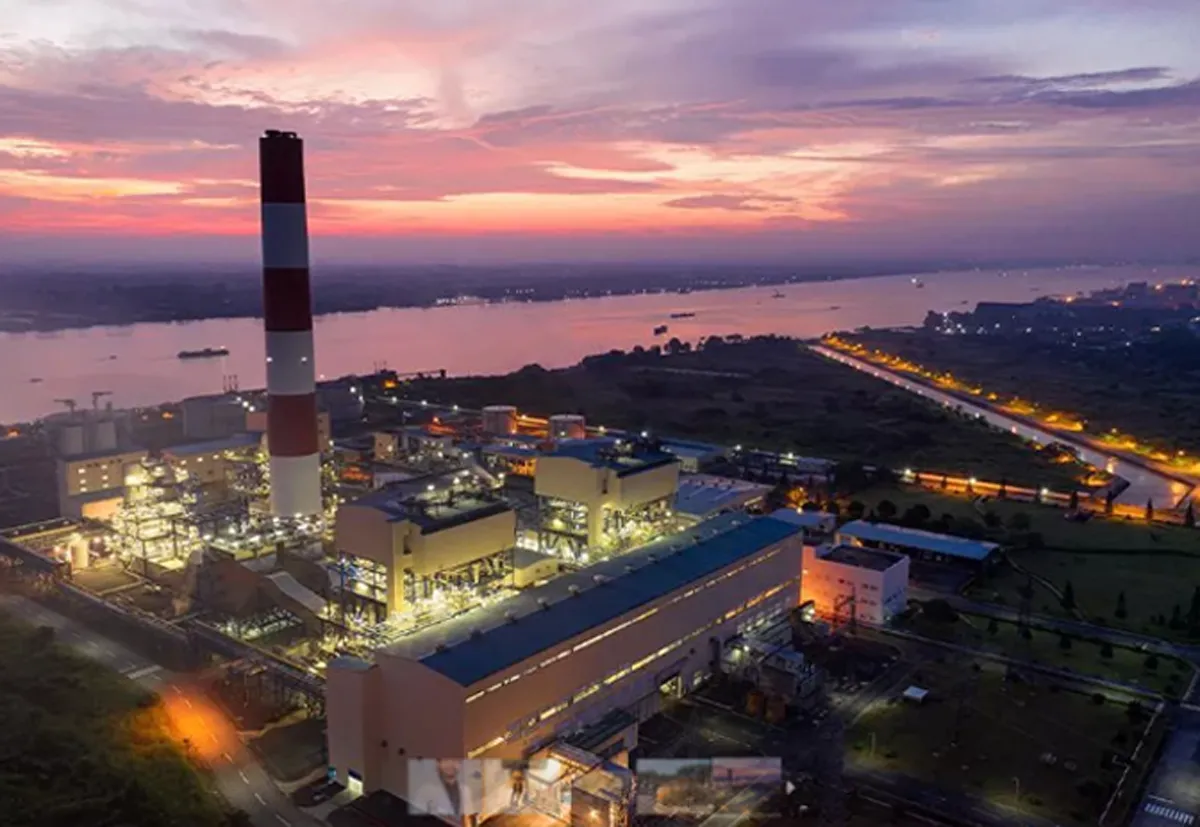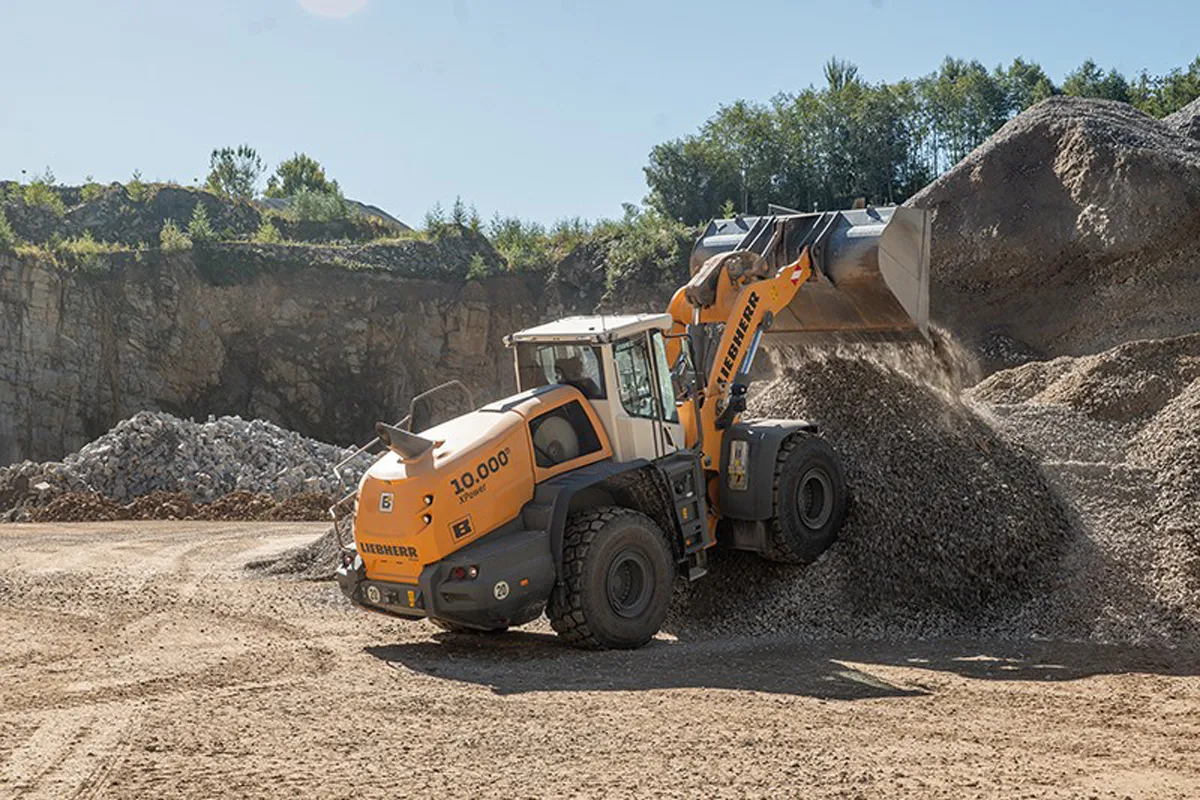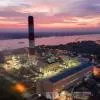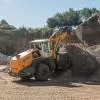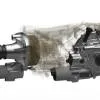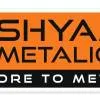Reinforcement of steel in concrete enhances its tensile strength and helps sustain it against seismic activity. The most common material choice for reinforcement has been found to be steel. There are millions of buildings, structures and bridges that have been made using the combination of steel reinforcement in concrete.
In the 1990s, there was a sudden increase in the deterioration of RCC buildings, especially in coastal zones or cities with high humidity and pollution. This was immediately countered by using modified steels such as CRS steel with small additions of chromium (Cr), copper (Cu), vanadium (V) and titanium (Ti) as well as using coated steel bars. One of the most accepted technologies in the 1990s was the use of fusion bond epoxy coating on rebar because of its large tonnage production with high quality control. However, damage during handling and lower bond with concrete made has proved questionable in many sites, though none of the over 900 structures made have showed any distress to date.
Alternative technologies of TMT bars and stainless steel bars were adopted. Simultaneously, there was a demand for the enhancement of the life of structures to grow from 60 years to 120 years, and even 300 years. It became a dilemma to find out how a RCC structure would sustain for 120 years, or even 200-300 years, when present technologies assured only 30 to 60 years. In such a process, even after taking into account all concrete design possibilities of high-density concrete and longer cover thickness, the problem was how to remedy distress owing to corrosion. We then created a model of the life of a concrete structure based upon a fixed concrete design but varying reinforcing material, with and without coating, using inhibitors in admixture or using ultimate stainless steels as reinforcing bars.
Model for estimating durability using a reinforced bar
A simple model for durability of a reinforced concrete structure can be understood from the schematic in Figure 1. The rebar is covered with a concrete cover whose density (M40, M60 or M80) decides its capability to resist permeation of moisture or pollutants. Corrosion of rebar can occur only if moisture/pollutants enter through the concrete cover and reach the concrete/rebar at interface ‘B’. However, initiation of moisture or pollutants starts from concrete cover surface ‘A’ and its transportation through the concrete cover.
Thus, for enhancing the durability of a concrete structure, it is necessary to design it with following properties:
Create a suitable barrier protection at the concrete cover so pollutants from the environment cannot enter the concrete cover.
In case a certain percentage of moisture/pollutants enter through the cover, delay their diffusion or transportation.
Create a very strong natural obstruction on the steel surface so the pollutants are not able to react with steel and form voluminous corrosion products that cause distress to the structure.
Step 1
This is the simplest and requires a corrosion-resistant coating on the concrete surface that can resist the movement of aggressive environment (moisture, chlorides, carbon dioxide or sulphur dioxide) towards the steel-concrete interface through the concrete cover. These coatings are usually modified epoxy coatings with a desired topcoat of polyurethane of any desired colour.
Step 2
This requires the following:
The best concrete design, such as concrete of density of M60 or more. Higher density helps in two ways: dense concrete restricts the diffusion of moisture and pollutants to reach the concrete-steel interface and hence delays the formation of corrosion products at the interface; it also prolongs the initiation of a pinhole followed by microcrack formation, leading to the main crack and spallation of the concrete cover.
Further modification of the concrete cover can be done by taking a mixed size of aggregates, adding concrete straighteners such as silica fumes and, most important, adding inhibitors to the concrete. This helps delay the diffusion of moisture and pollutants by acting as an obstacle.
However, the main factor responsible for increasing the durability of a concrete structure is the activity at point ‘B’.
There are several technologies with which reinforced concrete structures are made; the most common are the use of TMT (thermo-mechanical treatment) or CRS (corrosion-resistant steel) bars and CPCC (cement polymer composite coating); the use of coatings, especially the fusion bond epoxy coating that has been used for many important structures such as the Bandra-Worli Sea Link; and stainless steel rebars.
TMT bars are being wrongly projected as corrosion protection technology, which it actually is not. The thermo-mechanical treatment only renders a 5-10 micron martensitic hard layer, which has no direct relation to corrosion protection. It is simply a hard layer which protects the rebar from damage during handling.
The use of CRS is again being wrongly described as corrosion-resistant steel by just adding 1.5-2.4 per cent of elements such as Cr, nickel (Ni), Cu and molybdenum (Mo). Experience has shown that such modification enhances life by just one to one-and-a-half times and, therefore, is not suitable to provide a structure lasting more than even 30 years. These partial modifications initially show a lower corrosion rate but, in the long run, can prove harmful, as shown in a study (see Figure 2).Figure 2
Figure 2 shows how an inadequate concentration of alloying elements helps to lower corrosion initially but enhances corrosion at a later date (lower curve). And where the concrete already has some chlorides, there is no effect at all (upper curve).
As for CPCC, it is not a technology for large-scale, high-volume rebar requirement projects. Moreover, it involves only a very small percentage of acrylic resin in the cement water mixture. The technology does not assure a quality process for a large production of rebar, nor does it assure long-term protection as acrylic is a relatively low corrosion-resistant resin.
Fusion bond epoxy provides perhaps one of the best coated rebars with excellent properties required for a concrete structure but it cannot provide a long, durable life of 50 years or more, as coatings usually have a design life of 30 years .
The use of zinc-based galvanised rebar can be another choice. However, as it is also a coating-based technology, a long, durable 100-year life is questionable.
Stainless steel is perhaps the most acceptable corrosion-resistant material that remains un-attacked, even in a highly polluted environment. This mainly protects the RCC structure at point B as shown in Figure 1, owing to the formation of a strong chromia-based passive layer.
The main requirement of stainless steels to be used for rebar in RCC structures is, therefore, a suitable composition that can form a strong passive layer. This can happen by adding about 11.5 per cent of Cr in steel as usually seen by several ferritic stainless steels (400 series). In the same way, there are austenitic and duplex stainless steels formed by a combination of Cr and Ni and Cr, Ni and Mo. The passive layer in the latter cases is even stronger; hence, these stainless steels are very expensive. Thus, a cost-effective solution for stainless steel rebars is ferritic stainless steels with a minimum 11.5 per cent of Cr and that passes Fe500D specifications—a yield strength of above 500. However, this cannot be achieved by normal-grade stainless steels such as the most common AISI type 304 stainless steel, which corrodes heavily in a chloride base environment.
A detailed study carried out in our lab on ferritic steel with 11.5 per cent of Cr shows that the passive layer on the stainless steel remains stable even after exposure to 3 per cent NaCl solution (see Figure 3).
Figure 3. Corrosion of ferritic steel (11.5% Cr) in various concentrations of chlorides. It confirms that that even with 3% of chlorides, which is 3,000 ppm the 11.5% Cr, the steel still displays passivity, confirming its long life.
It may take a very long time for such high levels of chlorides to reach the concrete-steel interface, close to a hundred years, if a design strategy as shown in Figure 1 is strictly followed with best concreting practices.
Comparative performance of various stainless steels
The corrosion behaviour of ferritic (410 - 1.4003), austenitic (304 - 1.4431) and duplex stainless steel (2304 - 1.4362) rebars embedded in concrete in highly aggressive environments was studied in great detail by Merijana Serder et al (quote reference). The study was conducted using impedance spectroscopy (EIS) on embedded rebars. The results of the two-year study showed that out of various stainless steels used, those containing Mo, especially duplex SS 2304, showed excellent behaviour while ferritic steel showed the poorest behaviour. 316 SS actually showed a behaviour almost equivalent or slightly better than duplex mainly as it had high Mo and lower Cr than the duplex 2304, which has high Cr but just 0.28% of Mo. Ferritic SS has both lower Cr 12.26 and no Mo.
The exposure of stainless steel to an environment where the chloride level in the air is quite high along with high humidity results in the formation of aerosols of salt, which settle on the rebars. In areas with such a high concentration of chloride, the existing passive chromia layer starts deteriorating by forming pores and leads to corrosion. Thus ferritic stainless steels should not be exposed to an open environment in C4 and C5 conditions and preferably be kept covered when left in the open. However, the addition of even 0.28% of Mo strengthens the chromia passive layer by releasing MoO4- ions, which makes this passive layer robust and resistant to corrosion. Thus, for long durability, high Cr alone is not that important, but high Mo is important. That is why 316 austenitic stainless steels with low Cr (16%) but high Mo (2.60) display almost the same behaviour as duplex 2304 with high Cr (22%) and low Mo (0.28%)
Thus, one can conclude that for near coastal environments C4/C5 or sea immersion environments, duplex stainless steels such as 2304 (1.4362) are more superior and durable than simple ferritic 410 (1.4003). Austenitic 304 ( 1.4301) is very bad and should not be used for rebar applications. Austenitic 316 (1.4431) may be good but chances of chloride stress corrosion cracking (SCC) cannot be ruled out in the long term. Thus, duplex stainless steels are suitable from the microstructure, strength and corrosion-resistance perspectives for seawater or coastal applications C4 and C5.
Standards for use of stainless steels as reinforced bars in concrete structures
One of the important requirements for use of stainless steel as reinforcement material is a suitable standard. IS 16651:2017 is now available with the details given below.
Table 1. List of recommended stainless steels for rebar as per Indian Standard IS 16651:2017
Cost comparison of various stainless steels as reinforced bars and comparison with other bars
Figure 4. Comparison of the rates of different stainless steel rebars
World view
The acceptance of stainless steel as reinforced material becomes much easier when there are examples of its use in the global market. Stainless steels have been used successfully across the world, which can go far in motivate us to use them for structures in India.
Here are some examples:
Gateway Bridge in Brisbane, Australia: Used 200 tonne of LDX 2101 (duplex 1.4162)
Road bridges in Canada
Sea Defence Wall, United Kingdom
Infrastructure projects in Qatar
Road junction in Stockholm, Sweden: 6,000 tonne of rebar LDX2101 (1.4152)
Application of stainless steel rebar in railway projects
The Railways has recently shown an interest in using stainless steel for all its future products, including bridges over rivers and coastal bridges and tunnels. Based upon the various stainless compositions (PREN) and intensity of different locations (as per ISO classification), recommendations of various steels are possible as seen below.
In conclusion
Long durability in the range of 100-300 years requires robust material as reinforcement along with better concrete design and special additives and polymer coating that can resist moisture, chlorides, carbon dioxide and sulphur dioxide permeation through the concrete cover. The latter two factors can control chlorides or other pollutants for more than 50-75 years. Acquiring critical concentrations of chlorides and other pollutants along with moisture for initiating any corrosion reaction may take another 25 years to 225 years, thus assuring durability of the concrete structure for 100 to 300 years.About the author:
Professor AS Khanna, Chairman, SSPC India, retired as a professor from IIT-Bombay after 27 years of teaching and research, guiding 27 PhDs, 125 master’s and creating research expertise in high-temperature corrosion, coatings, surface engineering and corrosion of concrete structures. He has won several international awards such as the Humboldt Fellowship from Germany, the Royal Norwegian Fellowship and Fellowship of the Japan Key Centre, and has also worked as visiting professor in Germany and France. He is a coating expert and is associated with Hindustan Zinc for several assignments related to galvanization and its applications.
